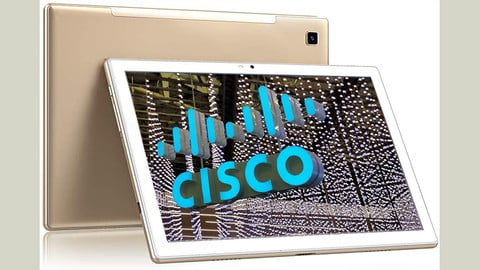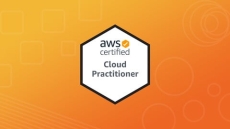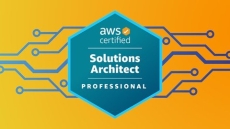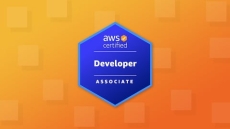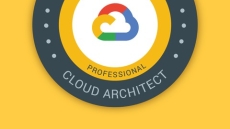Course Outline
Advanced Addressing and Routing Solutions: 25%
- Create structured addressing plans for IPv4 and IPv6
- Create stable, secure, and scalable routing designs for IS-IS, EIGRP, OSPF, and BGP (Cisco Reference: IS-IS Overview and Basic Configuration, Designing Scalable OSPF Design)
- Address families (Cisco Reference: OSPFv3 Address Families)
- Basic route filtering
- Attributes for path preference Route reflectors (Cisco Reference: BGP Diverse Path Using a Diverse-Path Route Reflector)
- Load sharing (Cisco Reference: Configuring a Load-Balancing Scheme)
- Determine IPv6 migration strategies
- Overlay (tunneling) (Cisco Reference: Implementing Tunneling for IPv6)
- Native (dual-stacking) (Cisco Reference: Dual Stack Network)
- Boundaries (IPv4/IPv6 translations)
Advanced Enterprise Campus Networks: 25%
- Design campus networks for high availability
- First Hop Redundancy Protocols (Cisco Reference: Campus Network for High Availability Design Guide, First Hop Redundancy Protocol (FHRP))
- Platform abstraction techniques
- Graceful restart (Cisco Reference: BGP Graceful Restart per Neighbor)
- BFD (Cisco Reference: Bidirectional Forwarding Detection)
- Design campus Layer 2 infrastructures
- STP scalability
- Fast convergence
- Loop-free technologies (Cisco Reference: Campus Network for High Availability Design Guide)
- PoE and WoL
- Design multicampus Layer 3 infrastructures (Cisco Reference: Multilayer Campus Architecture and Design Principles and Design Principles)
- Convergence and Load sharing
- Route summarization and Route filtering
- VRFs, Optimal topologies, and Redistribution
- Describe SD-Access Architecture (underlay, overlay, control and data plane, automation, wireless, and security) (Cisco Reference: Software-Defined Access 1.0)
- Describe SD-Access fabric design considerations for wired and wireless access (overlay, fabric design, control plan design, border design, segmentation, virtual networks, scalability, over the top and fabric for wireless, multicast) (Cisco Reference: Cisco SD-Access Solution Design Guide (CVD))
WAN for Enterprise Networks: 20%
- Compare WAN connectivity options
- Layer 2 VPN (Cisco Reference: Layer 2 WAN)
- MPLS Layer 3 VPN (Cisco Reference: Layer 3 MPLS)
- Metro Ethernet (Cisco Reference: Ethernet Access for Next Generation Metro and Wide Area Networks)
- DWDM (Cisco Reference: Introduction to DWDM)
- 4G/5G
- SD-WAN customer edge
- Design site-to-site VPN
- Dynamic Multipoint VPN (DMVPN) (Cisco Reference: Dynamic Multipoint VPN (DMVPN))
- Layer 2 VPN
- MPLS Layer 3 VPN (Cisco Reference: Implementing MPLS Layer 3 VPNs)
- IPsec
- Generic Routing Encapsulation (GRE) (Cisco Reference: Configuring VPNs Using an IPSec Tunnel and Generic Routing Encapsulation)
- Group Encrypted Transport VPN (GET VPN) (Cisco Reference: Group Encrypted Transport VPN (GETVPN))
- Design high availability for enterprise WAN (Cisco Reference: DESIGNING AND MANAGING HIGH AVAILABILITY IP NETWORKS)
- Single-homed
- Multihomed
- Backup connectivity
- Failover
- Describe Cisco SD-WAN Architecture (orchestration plane, management plane, control plane, data plane, on-boarding and provisioning, security) (Cisco Reference: Cisco SD-WAN Design Guide)
- Describe Cisco SD-WAN design considerations (control plane design, overlay design, LAN design, high availability, redundancy, scalability, security design, QoS and multicast overSD-WAN fabric) (Cisco Reference: Cisco SD-WAN Design Guide)
Network Services: 20%
- Select appropriate QoS strategies to meet customer requirements (DiffServ, IntServ) (Cisco Reference: Overview of DiffServ for Quality of Service, DiffServ — The Scalable End-to-End QoS Model)
- Design end-to-end QoS policies Cisco Reference: Quality of Service Design Overview, Quality of Service Design Overview)
- Classification and marking
- Shaping
- Policing
- Queuing
- Design network management techniques
- In-band vs. out-of-band (Cisco Reference: Cisco SAFE Reference Guide)
- Segmented management networks
- Prioritizing network management traffic
- Describe multicast routing concepts (source trees, shared trees, RPF, rendezvous points) (Cisco Reference: IP Multicast Technology Overview)
- Design multicast services (SSM, PIM bidirectional, MSDP) (Cisco Reference: Configuring SSM, Interdomain Multicast Solutions Using SSM, Interdomain Multicast Solutions Using MSDP)
Automation: 10%
- Choose the correct YANG data model set based on requirements (Cisco Reference: YANG Infrastructure)
- Differentiate between IETF, Openconfig, and Cisco native YANG models (Cisco Reference: About OpenConfig YANG, Configure NETCONF/YANG)
- Differentiate between NETCONF and RESTCONF (Cisco Reference: Cisco NETCONF and REST Device Management API, RESTCONF Protocol)
- Describe the impact of model-driven telemetry on the network (Cisco Reference: Model-Driven Telemetry)
- Periodic publication
- On-change publication
- Compare dial-in and dial-out approaches to model-driven telemetry (Cisco Reference: Core Components of Model-driven Telemetry Streaming)
How to Enroll Designing Cisco Enterprise Networks (ENSLD) Certification course?
How many members can access this course with a coupon?
Designing Cisco Enterprise Networks (ENSLD) Certification Course coupon is limited to the first 1,000 enrollments. Click 'Enroll Now' to secure your spot and dive into this course on Udemy before it reaches its enrollment limits!
